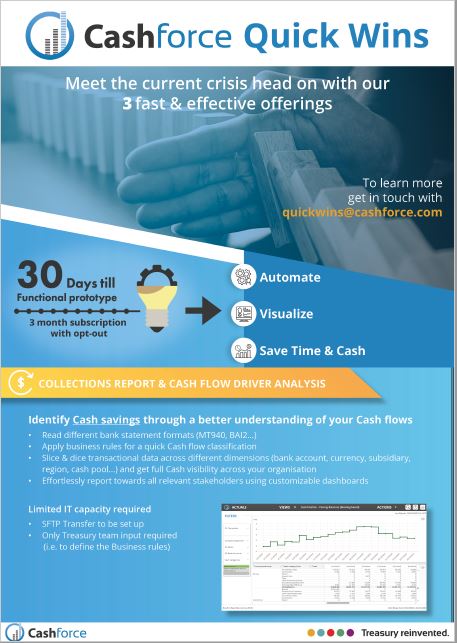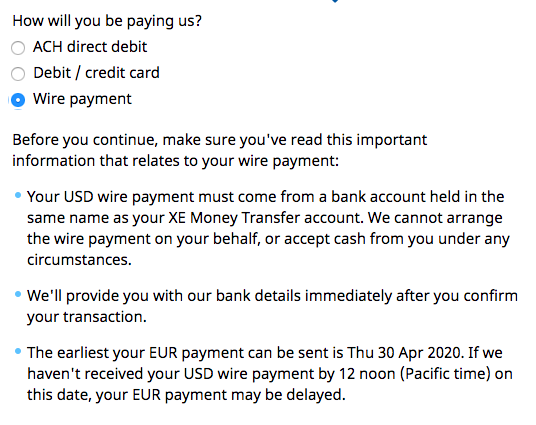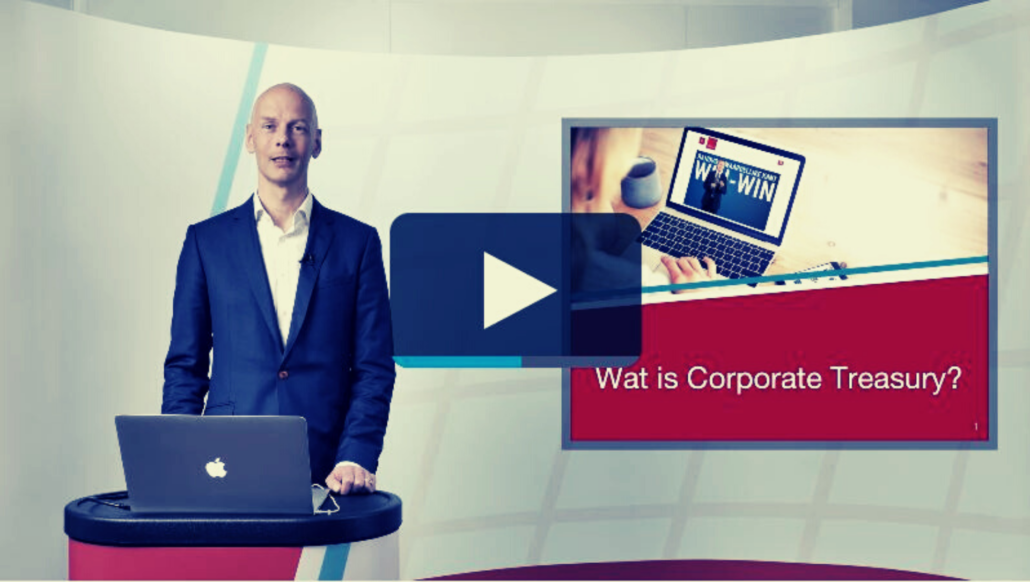| 08-05-2020 | Carlo de Meijer | treasuryXL
In response to a call last year October by the G20 to examine regulatory issues raised by so-called global stable coin arrangements and to advise on multilateral responses ‘as appropriate’, the Financial Stability Board (FSB) recently published ten high-level recommendations for consultation for effective regulatory and supervisory treatment of stable coins. The FSB however did not extend their response to financial stability and monetary policy risk issues. And these are of utmost importance.

What are stable coins?
But first, what are stable coins? These are digital currencies or contracts that are linked to certain underlying assets. That could be a currency, a real estate, or stocks. Stable coins can be used in many forms, namely as a store of value, a means of payment or fully backed or collateralised by fiat currency. Stable coins can be issued as tokens or accounts, settled in a centralized or decentralized fashion. So there is not one uniform sort of stable coin but many variations, making it very difficult to control and regulate.
Why are stable coins taking off?
Why is adoption of stable coins growing? Stable coins could bring a number of benefits especially to cross-border payments, which currently tend to be slow, non-transparent, and expensive. Stable coins might bring improved efficiency, broader financial inclusion, and more innovation (better integrated in our daily digital lives). But also low transaction costs (near-costless and immediate), convenience, global reach (via strong network effects), and speed are all key advantages.
While stable coins could greatly facilitate transactions in foreign currency, it could drastically lower costs of remittances, which would increase foreign currency inflows. Though they are increasingly being used for payments, an area where speed and efficiency have become the deciding factor, stable coins could also make storage of foreign currency easier, safer, and cheaper.
Most banks however do not yet address consumer and companies demands for these kind of digital currencies, so other organisations are filling the gap.
Why are stable coins risky?
Facebook’s plans to launch a stable coin named Libra has created a large amount of scepticism from central bankers and financial regulators around the globe (See my earlier blog). And that for justified reasons.
While stable coins have the potential to enhance the efficiency of the provision of financial services, at the same time they may also generate a number of important risks. Though stable coin arrangements might be expected to have contingency arrangements in case of problems, there are a number of risks brought in by them that could be detrimental for both financial stability and monetary policy effectiveness.
These risks are related to issues such as the value of stable coins, the security of the trust account, the interoperability of stable coins and thus to competition.
- Reduced consumer protection
There is the risk of reduced consumer/investor protection. Providing appropriate protection levels may become more challenging, as the cross-border nature of a stable coin means it is subject to a variety of regulatory frameworks in different jurisdictions. It is therefore not clear whether strong safeguards on consumer bank accounts and the associated payments will be in place with stable coins, or what recourse consumers will have. There is a big chance that redemption of stable coin into fiat currency is not (always) possible as government-backing is absent. Without requisite safeguards, stable coin networks at global scale may put consumers at risk.
- Limiting market competition
But also from a competition point-of-view it might be very challenging to create a future level playing field. Stable coins may pose challenges for competition and anti-trust policies. Competition in financial markets may be endangered especially when stable coins are not interoperable. Tech giants could thereby use their networks to create monopolies to “shut out” competitors and monetize information, using proprietary access to data on customer transactions. And there is the risk of a potential and partial disintermediation of commercial banks if some depositors prefer holding stable coins.
And there is the risk – caused by lack of transparency (anonymity) and clear regulation – of stable coins promoting illicit activities such as money laundering, terrorist financing, and other financing crimes. But it could also heighten data privacy and protection concerns, as the organisation behind a stable coin could rapidly become the ‘custodian’ of millions of users’ personal information.
Stable coins may negatively impact financial stability and monetary policy
Stable coins already pose a number of additional risks including credit and liquidity risk to the existing financial system. These may threaten financial stability and hamper monetary policy and ultimately may harm real economic activity if not designed and regulated properly. This by increasing existing fragilities in the financial sector and facilitating the cross-border transmission of shocks. These impacts could be seriously magnified if stable coins are widely accepted and used as a means of payment on a global scale for general use.
Threat to financial stability
There are still many questions related to the implications of a widely used stablecoin for financial stability. This impact will greatly depend on the sort (design) of the stable coin and complexity of these arrangements as well as the scale of adoption. If stable coins achieve wide-scale usage, more serious financial stability issues may result.
The effect of a stable coin on financial stability, for example, would thereby be driven in part by how the stable coin is tied to an asset (if at all) and by the features of the asset itself. A stable coin tied one-to-one to an individual currency would have different (but less negative) implications than one tied to a basket of currencies.
A stable coin that is built on a permissioned network would have different (less) risk implications than a permissionless network, which may be more vulnerable to money laundering and terrorist financing risks. A stable coin used solely by commercial banks would have a different risk profile than one for consumer use.
Giving the general public access to stable coins could pose a greater threat to financial stability (of the international payments system), by increasing the likelihood of a bank run in times of shocks. The impact on financial stability will be heavily determined by how stable coins are managed.
If risks are not addressed and managed adequately, the resulting liquidity, credit, market, or operational risks, could undermine confidence and trigger a run on bank deposits where users would all attempt to redeem their GSCs at the reference value. Such a scenario would be more likely if the stable coin issuer is not transparent about its reserve holdings or if the stable coin’s reporting lacks credibility. But also poor governance may result in the stable coin being vulnerable to runs or loss of confidence.
Hampering monetary policy
Global stable coins have also the potential to challenge monetary sovereignty and change the way monetary policy works. Stable coins could hamper monetary policy in a number of circumstances. Especially if they reach global scale they could have a very negative impact on the effectiveness of the monetary policy. This will be most pronounced during periods of strains when there is a massive substitution of fiat currencies into stable coins.
Large scale use of stable coins could lead to further privatisation of money, out of the control of monetary authorities, and to frustrating trust in the existing monetary system. This could further negatively impact monetary policy effectiveness and ultimately have massive disruptive effects on the entire global financial ecosystem.
- Real impact on monetary policy
The real impact on monetary policy will very much depend on how stable coins will be used: as a store of value, a means of payment or a unit of account. But also on how the stable coin is linked to the various underlying asset(s).
If a stable coin is used as a store of value on a large scale, the effect of monetary policy on domestic interest rates and credit conditions could be weakened. This is especially the case in countries whose currencies are not part of the reserve assets.
If users were to hold stable coins permanently in deposit-like accounts, bank retail deposits might decline. This will increase bank dependence on wholesale funding and might exaggerate monetary policy transmission. This because wholesale deposits are generally more interest rate-sensitive than “sticky” retail deposits.
By facilitating cross-border payments, a stable coin might increase cross-border capital mobility and the substitutability of domestic and foreign assets, affecting monetary policy transmission thereby amplifying the responsiveness of domestic interest rates to foreign rates and as a result underme domestic monetary control.
The existence of stable coins as a safe haven during times of financial crisis could also encourage dollarisation. Via network effects, this could have a significant impact on monetary sovereignty through currency substitution leading to a loss of monetary autonomy. Central banks may lose monetary policy control, as financial systems become more exposed to exchange rate shocks, while the central bank is constrained in providing liquidity. This may have adverse effects on monetary policy effectiveness. As the monetary supply of stable coins cannot be controlled by any one party, it will negatively affect the menu of options available to central bankers in certain economic situations.
Some worry that, if stable coins are adopted on a wide enough scale, it could have a negative externality, or spill-over effect, on the economy as a whole. This may be amplified by potential uncertainty surrounding the ability of official authorities to provide oversight, backstop liquidity, and collaborate across borders
How to react: tackling the risks?
Stable coin networks at global scale are leading us to revisit questions over what form money can take, who or what can issue it, and how payments can be recorded and settled. While central bank money and commercial bank money are the foundations of the modern financial system, nonbank private “money” or assets also facilitate transactions among a network of users.
Regulators, central banks and monetary policy authorities would be confronted with a number of challenges. If stable coins may reach global scale, they are likely to become systemically important and concentrate risks. That however may hurt the safety, efficiency and integrity of the global financial system. For that reason strict regulations and monetary surveillance is of utmost importance.
“The more you move towards the core of the global payment system, the more likely you are to see central bank money because that is what provides stability.” “We care about financial stability and we have built a system which works very well … it has never failed.” Benoît Coeuré, director of BIS’ new innovation hub
Because stable coins and other cryptocurrencies are unlikely to be bound by physical borders, regulatory actions in one jurisdiction are unlikely to be fully effective without coordinated action elsewhere. The emergence of stable coins has raised important questions for regulators, central banks and other authorities worldwide how to react. They are now looking for ways how the various risks linked to stable coins could be tackled in a most effective way.
The challenges however will not only be creating an appropriate regulatory framework including consumer protection, but also measures to counter financial stability and monetary policy risks. Given the large differences how stable coins are organised and the role they might play, there is no one-solve-all-problems solution. Things to decide are: whether or not to restrict foreign-currency stablecoins; whether or not forbid stable coins unless there is a sufficient framework in place to ensure governance and risk management; ask for more interoperability between stable coins; risk management procedures in place by enforcing international standards etc.
- Regulate stable coins like money market funds
Customer funds must be safe and protected from bank runs. This calls for legal clarity on what kind of financial instruments stablecoins represent. One approach would be to regulate stable coins like money market funds that guarantee fixed nominal returns, requiring providers to maintain sufficient liquidity and capital.
- Access to Central Bank reserve accounts
Another way is getting central banks involved. They could offer stable coin providers access to their reserve accounts ( the safest and most liquid assets available), under strict conditions. This offers a blueprint for how central banks could partner with the private sector to offer the ‘digital cash of tomorrow’—called synthetic central bank digital currency (sCBDC). In the sCBDC model, which is a public-private partnership, central banks would focus on their core function: providing trust and efficiency. The private sector, as providers of stablecoins, would be left to satisfy the remaining steps under appropriate supervision and oversight, and to do what they do best: innovate and interact with customers.
- Create own Central Bank Digital currency
The most extreme reaction of Central Banks would be to create their own central bank digital currency (CBDC), whose monetary issue is centralized in the hands of the bank. Proponents argue that central bank digital currencies would be a safer alternative to privately issued stable coins because they would be a direct liability of the central bank.
A more relevant question may be whether some intermediate solutions may be able to offer the safety and benefits of real-time digital payments based on sovereign currencies without necessitating radical transformation of the financial system.

Carlo de Meijer
Economist and researcher
Source




















